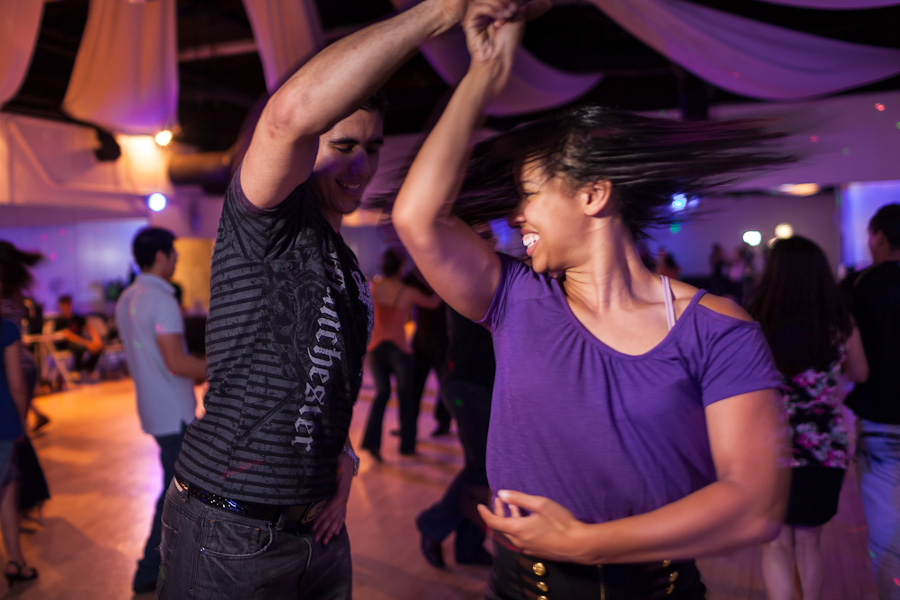While most people who are introduced to salsa initially learn salsa on 1, or LA style salsa, this step guide follows the counts for salsa on 2, or New York style salsa which is similar to Mambo. That being said, any of these steps can be used while dancing LA style or Cuban style salsa by switching around the appropriate counts.
What are the basic steps of salsa?
Each step in salsa is danced within an 8 count of music to the counts 1-2-3, 5-6-7. Notice there is a pause on 4 and 8, as well as break steps on 2 and 6. The basic step simply goes forward and backward.
The following steps are some of the basic variations:
- Side Basic: Without getting too technical, the side basic simply changes the basic step by going side to side with each step instead of forward and backward.
- Back Basic: You step backwards and break forwards on 2 and 6.
- Front Basic: You step forwards and break backwards on 2 and 6.
- Right Turn: You do a 180 degree turn to your right on the 2nd count and complete a 360 degree turn by pivoting to face the front on the 5th count.
- Left Turn: You do a 180 degree turn to your left on the 3rd count and complete a 360 degree turn by pivoting to face the front on the 6th count.
The following video gives a demonstration of all of the steps mentioned above:
Things to keep in mind:
- Your torso is never supposed to rotate while doing these steps.
- Step on the inside balls of your feet.
- Your steps should never be too big so that your weight can easily be switched from one foot to the other.
- There is generally supposed to be some hip movement. The hip opposite of the leg you are stepping on sinks to create that motion.
- Your arms should be at ease but remain at chest level at all times unless you add your own styling.
Introduction to Partner Work
The counts for the leads during partner work are reversed to that they break backwards on 2 and forwards on 6. There are 2 types of holds to keep in mind before attempting partner dancing:
- Open hold: The leads and follows hold both hands while facing each other.
- Closed hold: While holding one hand, the leads put their other hand on the follows’ shoulder blade while the follows put their other hand on the leads’ shoulder.
The following video goes into the details of the different holds:
Basic Partner Work
All of the basic footwork patterns can be done using either hold in partnerwork. The leads dance to the reverse counts and initiate each step while the follows read the signal of each arm’s pull or push in order to know which step is coming up.
- Cross Body Lead: This step falls under the basic category because it is used very often in combination with other steps. The lead steps out allowing the follow to go across him.
- Right and Left Turns: The lead initiates this move by raising their hand (it could be either arm depending on the hold) on the 7th count. The follow recognizes the signal so that they are prepared to do a turn on the next 8 count.
- Cross body turns: Again, the lead must signal with the help of their arms in order to let the follow know that there is a turn coming along with a cross body lead.
- Hair Brush: This isn’t really a step but a motion of the arms that can be combined with most steps. The lead simply takes the arm of the follow they are holding and do a gentle tossing motion so that the follow brushes their hair before bring the arm back around towards the lead.
- Spins: A spin is different from a turn because it is executed on one foot and in one motion without taking any additional steps. This is where it becomes extremely important to stay on the inside ball of the foot in order to complete a spin which can seem almost effortless. Spins can be done to either side as well.
While these are the most basic salsa steps which anyone at an intermediate level should be able to do, they form the foundations around all the other steps and patterns which are essentially complicated combinations of hand holds, arm signalling, body movement, and footwork. We highly recommend taking salsa classes in order to fully understand each movement if you are a beginner.






Leave a comment